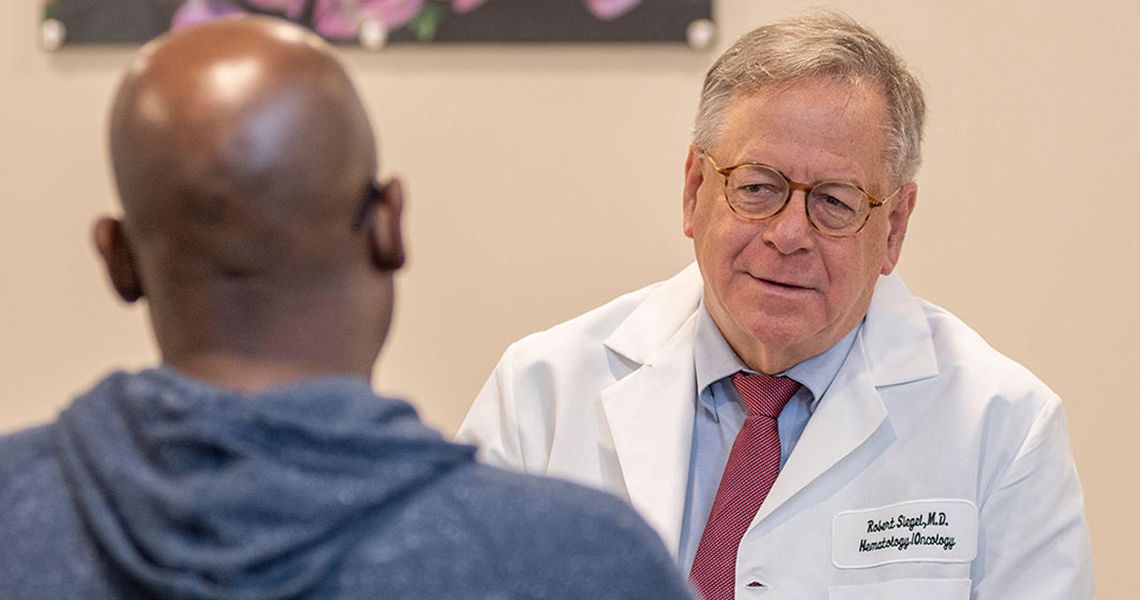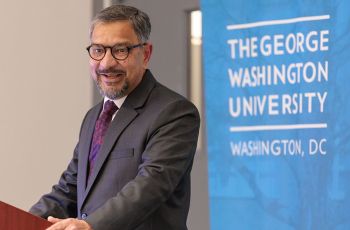In June 2018, before a room full of oncology experts, Robert Siegel, MD ’77, described a new treatment developed for patients suffering from oropharyngeal cancer.
Siegel, associate center director for education, training, and network development at the George Washington University (GW) Cancer Center, presented findings from a Phase II study during the American Society of Clinical Oncology’s Annual Meeting, held in Chicago.
Oropharyngeal cancer involves the base of the tongue, floor of the mouth, and tonsils, said Siegel. It’s not the most common cancer, but is also not a rare one, he noted.
“Historically, patients who develop this cancer have smoked heavily and consumed large amounts of alcohol," he said. However, now most oropharyngeal tumors are a consequence of human papillomavirus (HPV) infection; patients with HPV often have no history of heavy smoking or alcohol abuse. HPV tumors are more responsive to both chemotherapy and radiation, he added.
The current standard treatment includes a combination of high-dose radiation plus chemotherapy. Siegel noted that the treatment is “80 to 90 percent successful." However, the radiation leaves patients suffering from myriad side effects.
Short-term effects include damage to the back of the throat that makes eating painful, and often creates the need for gastrostomy tubes to maintain adequate nutrition. In the long term, radiation knocks out the salivary glands, leaving patients with chronic dry mouth, which can lead to increased gum and dental disease. The radiation can also alter a patient’s sense of taste and cause chronic swallowing problems.
The investigational treatment eliminates the need for radiation in most patients. Instead, said Siegel, patients receive three doses of standard chemotherapy followed by surgery.
“We found that the primary cancer and involved lymph nodes shrank dramatically with chemotherapy," he said. After chemotherapy treatment, the cancer was removed through a new technique - TORS (transoral robotic surgery). Siegel credited Nader Sadeghi, MD, a former faculty member, for bringing the technique to GW. Currently that technology is used by GW School of Medicine and Health Science head and neck surgeons Arjun Joshi, MD, associate professor of surgery; Punam Thakkar, MD, assistant professor of surgery; and Joseph Goodman, MD, assistant professor of surgery.
Siegel added that throughout the study, patients were referred to standard radiation therapy if the new treatment wasn’t working. “We were doing something unique, and we wanted to make it as safe as possible for the patients," he said.
Sixteen of the 20 patients in the study never needed radiation, and 18 of 20 patients remain in remission. “We saw at least equal effectiveness in the treatment, but were cutting way back on the side effects," Siegel said.
Siegel would like to add two more steps in a follow-up study: using next-generation sequencing of the tumor to identify which patients are at high risk for relapse, and incorporating additional drugs, such as immunotherapy drugs, to see if they would make the treatment even more effective.




